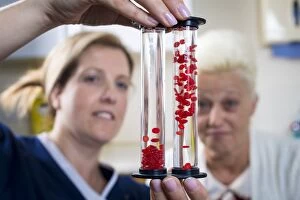Risk Factor Collection
"Understanding the Risk Factors
All Professionally Made to Order for Quick Shipping
"Understanding the Risk Factors: A Closer Look at Diabetes Education and Blood Viscosity" Did you know that diabetes education and blood viscosity play crucial roles in determining your risk for various health conditions? By delving into these factors, we can gain valuable insights into our overall well-being. At the Diabetes Clinic, waist measurement is a key indicator of potential risks. Research suggests that individuals with larger waist measurements are more likely to develop diabetes-related complications. Monitoring this factor allows healthcare professionals to intervene early and provide necessary guidance. Moreover, recent studies have shed light on the correlation between breast cancer protein (C016) and cancer cells (4613, 4612, 4610). These proteins act as markers for breast cancer development and progression. Understanding their presence within cancer cells helps doctors tailor treatment plans accordingly. Intriguingly, breast cancer protein molecule C016 also exhibits variations in different stages of the disease (4608, 4604). This knowledge aids researchers in identifying specific targets for therapies or interventions based on individual cases. Furthermore, ongoing research focuses on other variants of breast cancer protein molecules such as C016 (4598), C016 (4455), C016 (4454), and C016 (4453). Unraveling their significance could potentially revolutionize diagnosis techniques or pave the way for novel treatments. By recognizing these risk factors associated with diabetes education, blood viscosity levels, and breast cancer proteins' behavior within cells, we empower ourselves to make informed decisions about our health. Stay tuned as scientists continue to explore these intricate connections that shape our understanding of diseases like never before.













